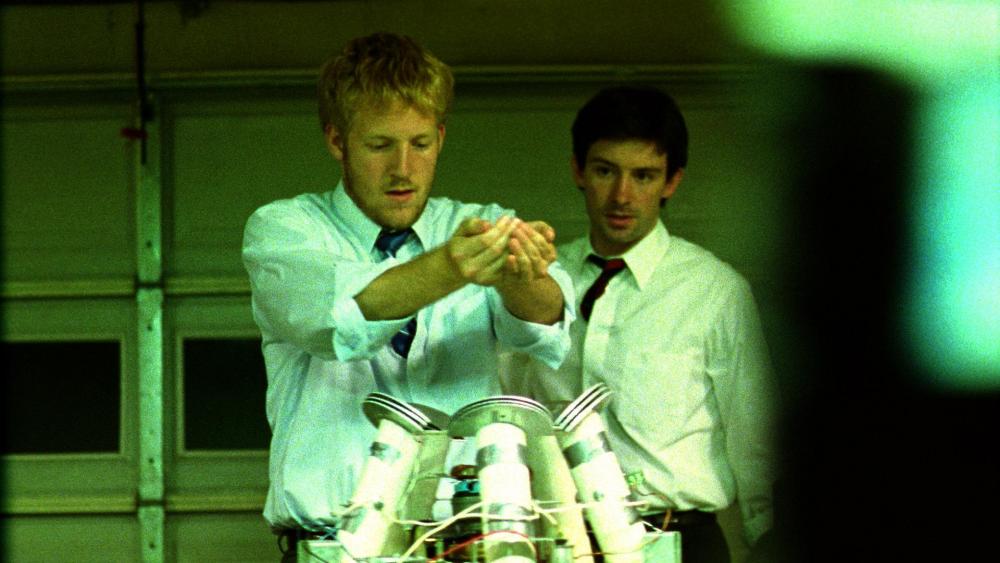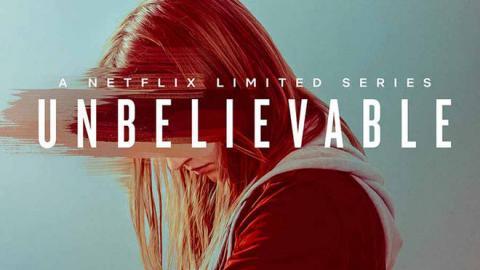7 Defining Lo-Fi Sci-Fi Movies
Share with friends

By Isaac Simpson
Sometimes it's important to define things, to label trends for use in common parlance. In recent cinephilic conversations I've been referring explain a certain type of sci-fi film as "Primer-esque" or "like a Shane Carruth movie."
Luckily, The Wall Street Journal has come up with a name for this type of film: Low-fi Sci-fi. However, while the WSJ describes and lists examples of such films, they don't provide a definition. So, what exactly is Low-fi Sci-fi?
The sci-fi film industry, like the global economy, is tearing itself apart. The middle is being divided into two groups: the "haves" and the "have nots." Being a "have not," however, is better than it sounds.
On the one hand you have big budget superhero movies and rehashings of familiar stories, like the Avengers (budget: $225 million) and Prometheus (budget: $130 million). Big budget sci-fi films that are based on original ideas, even good original ideas like Edge of Tomorrow, flop more often than their unoriginal counterparts, just like Edge of Tomorrow did.
http://myteevee.tv/wp-content/uploads/2014/08/MV5BNzU5MTYwNTg5NV5BMl5BanBnXkFtZTYwMzkxNTUz._V1_SY317_CR660214317_AL_.jpgOn the other hand, low budget sci-fi movies built around original concepts are thriving. Films like Monsters (budget: $500,000), Primer (budget; $7,000) and Safety Not Guaranteed (budget: $700,000) have been heralded as successes and made the careers of some of our most promising filmmakers, despite having budgets 20 times less than their big budget counterparts. These filmmakers have learned how to do more with less, and to avoid the pressure of attracting mass audiences. When it comes to sci-fi films, sometimes too much money is a bad thing.
Thus, we are in the midst of a cinematic movement everyone from Reddit to the New York Times is calling: The New Era of Low-fi Sci-fi.
So what films define the Low-fi Sci-fi Movement? Besides the films already mentioned, the WSJ article names The Signal, I Origins, The Machine, District 9, Cloverfield, Moon and Another Earth as examples of Low-fi Sci-fi. Some of these, however, don't seem to belong on the list, either because their budgets are too high (District 9) or because they lack the "small-idea" originality (Cloverfield).
Before we can articulate the best of a new genre, we have to define it. Here's my crack at it:
Low-fi Sci-fi: A contemporary science fiction film with a budget of less than $5 million that's based on an original concept that explores a unique scientific idea, or a familiar scientific idea in a unique way.
Here are the 7 most "low-fi sci-fi" films:
7. Another Earth (2011)
Budget: $100,000
Box Office* (includes International): $2.1 million
Rotten Tomatoes: 63%
Another Earth is about the discovery a duplicate planet Earth. It worked with some audiences, but failed to catch on as a sci-fi classic. Some say because it focused too much on the personal elements of the love affair between the two leads.
6. The Signal (2014)
Budget: $2 million
Box Office: $1.2 million (this number may be wrong due to inconsistent statistics)
Rotten Tomatoes: 54%
The Signal is conspiracy-flavored story about EBEs (Extraterrestrial Biological Entities) starring Laurence Fishburne that appealed to some critics, but was panned by others as "a dumb sci-fi move gussied up to look like a smart one."
5. Upstream Color (2013)
Budget: $100,000
Box Office: $450,000
Rotten Tomatoes: 84%
Upstream Color is Shane Carruth's follow-up to Primer. It toys with the concepts of biology and love in the same way Primer does with time. Some relished its Lynchian atmosphere, but others found it a bit too convoluted to add up to a satisfying sci-fi flick.
4. Safety Not Guaranteed (2012)
Budget: $700,000
Box Office: $4.4 million
Rotten Tomatoes: 91%
In Safety Not Guaranteed, an eccentric posts an ad in the newspaper soliciting companions for a trip through time. It was embraced by audiences and lauded by critics, who found it to be quirky but inspiring.
3. Monsters (2010)
Budget: $500,000
Box Office: $5.6 million
Rotten Tomatoes: 71%
Monsters is a super low budget monster movie that feels like the first time you saw Godzilla. Indeed, it's director Gareth Edwards went on to direct Godzilla (2014).
2. Moon (2009)
Budget: $5,000,000
Box Office: $10.6 million
Rotten Tomatoes: 89%
Moon's budget is higher than the others on this list, but it still fully embodies the Low-fi Sci-fi spirit. It's a unique combination of technological and biological science fiction acted almost entirely by one actor, Sam Rockwell, and is thus in more ways than one the definition of doing a lot with a little.
1. Primer (2004)
Budget: $7,000
Box Office: $565,000
Rotten Tomatoes: 72%
The conversation about Low-fi Sci-fi always comes back to Primer. Of course it's arguable whether Shane Carruth started the movement, but he is undoubtedly its most iconic figure. He could have directed a big budget movie after Primer, but spent only $100,000 on Upstream Color. In his own words, "you don't need to make $100 million at the box-office to have a story that can be relevant in the culture for a long time. You just need to be earnest."
HONORABLE MENTIONS: Two films that were disqualified from the list but still embody the principles of Low-fi Sci-fi are Europa Report (2013) (because the only reported budget is "less than $10 million), Melancholia (budget: $9 million) and Let the Right One In (2008) (because it's a vampire movie).
*NOTE: BO numbers come from the-numbers.com. Does not include video sales or licensing deals (Netflix, for example), which is often not public information.
Follow Isaac on Twitter




